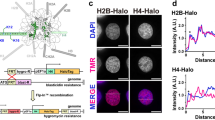Abstract
The tumor suppressor protein p53 is a transcription factor frequently inactivated in human cancers. We have studied the DNA binding potential and the transcriptional activity of p53 variants and p53 protein complexes in in vitro transcription assays. p53 specific transcription was measured via introduction of radioactive UTP into G-free cassette transcripts regulated by promoter sequences containing p53 response elements. Latent and activated p53 fractions were prepared from insect cells infected with p53 encoding baculoviruses by chromatography on heparin columns. p53 fractions distinguishable by their specifc DNA binding activities and their recognition by monoclonal antibody PAb421 were obtained. Specific DNA binding and binding to PAb421 are mutually exclusive. The C-terminus of p53 can be phosphorylated by casein kinase II, protein kinase C and cyclin dependent kinases. The antibody PAb421 binds within the PKC phosphorylation site of p53 and is able to activate DNA binding of latent p53 in vitro. Activation of p53 by PAb421 also results in enhanced transactivation in vitro. Dephosphorylation of latent p53 with phosphatase 2A does not change these properties. This suggests that a conformational change in the carboxyl terminal domain of p53 controls the transactivation potential of p53.
Similar content being viewed by others
Author information
Authors and Affiliations
Rights and permissions
About this article
Cite this article
Mundt, M., Hupp, T., Fritsche, M. et al. Protein interactions at the carboxyl terminus of p53 result in the induction of its in vitro transactivation potential. Oncogene 15, 237–244 (1997). https://doi.org/10.1038/sj.onc.1201174
Received:
Revised:
Accepted:
Issue Date:
DOI: https://doi.org/10.1038/sj.onc.1201174
- Springer Nature Limited
Keywords
This article is cited by
-
Protein kinase CK2 is involved in G2 arrest and apoptosis following spindle damage in epithelial cells
Oncogene (2001)
-
The C-terminus of mutant p53 is necessary for its ability to interfere with growth arrest or apoptosis
Oncogene (2001)
-
Unmasking of phosphorylation-sensitive epitopes on p53 and Mdm2 by a simple Western-phosphatase procedure
Oncogene (2000)
-
Mechanisms of switching on p53: a role for covalent modification?
Oncogene (1999)
-
Effect of transition metals on binding of p53 protein to supercoiled DNA and to consensus sequence in DNA fragments
Oncogene (1999)




